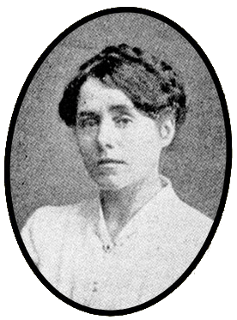Julia Grenan facts for kids
Julia Grenan (also known as Sighle or Sheila) was an Irish woman born on July 2, 1883. She was a strong supporter of Irish independence and women's rights. Julia was a member of Cumann na mBan, an Irish women's organization. She is famous for being one of the last three women to leave the main building (Headquarters) during the Easter Rising in 1916. She passed away on January 6, 1972.
Contents
Early Life and Activism
Julia Grenan was born in Dublin, Ireland. Her father, Patrick Grenan, was a joiner. She was the only girl in her family, with two brothers. Julia went to a school run by the Sisters of Mercy. After school, she became a dressmaker.
Julia spent most of her life with her close friend, Elizabeth O'Farrell. They were friends since childhood and grew up together. Both women were very passionate about Ireland's independence. They learned to speak Irish and joined several important groups in Dublin.
Joining Key Organizations
Julia and Elizabeth joined the Gaelic League, which promoted Irish language and culture. They also joined the Irish Women's Franchise League, which fought for women's right to vote. They were also part of the Irish Women Workers' Union, which supported workers' rights.
In 1906, Julia joined Inghinidhe na hÉireann (Daughters of Ireland). Later, in 1914, she became a member of the Inghinidhe branch of Cumann na mBan. This group played a big role in the fight for Irish freedom.
Supporting Workers and Training
During the 1913 Dublin Lock-out, a major workers' strike, Julia and Elizabeth supported the workers. They also worked with Constance Markievicz to stop Irish men from joining the British army. Markievicz even taught Julia and Elizabeth how to use firearms.
Role in the Easter Rising
Julia Grenan played a brave part in the Easter Rising of 1916. This was a major event where Irish rebels tried to gain independence from British rule.
Preparing for the Rebellion
Just before the Rising began, Constance Markievicz made sure Julia and Elizabeth were ready for action. She took them to Liberty Hall to meet Irish Citizen Army leader James Connolly. Markievicz told Connolly that Julia and Elizabeth could be trusted.
Carrying Messages and Helping the Wounded
Julia was sent to towns like Dundalk and Carrickmacross. Her job was to deliver important messages to republican groups there. When she returned, she worked at the General Post Office (GPO) in Dublin. The GPO was the main headquarters for the rebels.
At the GPO, Julia and Elizabeth worked as couriers, delivering messages. They also helped as nurses, caring for the wounded. They even secretly carried ammunition from the GPO to another rebel base, hiding the weapons under their clothes.
Julia and Elizabeth took care of many injured rebels, including James Connolly. His ankle was badly hurt by a bullet. When other women were told to leave the GPO, Julia and Elizabeth refused. They stayed until the very end.
The Surrender
On Friday night, the rebels had to retreat to Moore Street. Julia and Elizabeth continued to nurse the wounded there. When the leaders decided to surrender, Elizabeth O'Farrell was chosen to deliver the message. She was given a Red Cross sign and a white flag.
Julia watched from the doorway as Elizabeth walked out into heavy gunfire to deliver the surrender. It was a very dangerous moment.
After the Rising
After the surrender, Julia Grenan was arrested along with the men from Moore Street. She was held overnight and then taken to Richmond Barracks. Finally, she was imprisoned with other women at Kilmainham Gaol until May 9. While in prison, she heard the sounds of executions. The guards told the prisoners it was just ongoing fighting.
Continuing the Fight for Independence
Julia continued her work for Cumann na mBan with Elizabeth O'Farrell. They carried important messages during the Irish War of Independence. This war was fought to achieve full independence for Ireland.
After the Anglo-Irish Treaty was signed in 1921, Julia and Elizabeth did not agree with it. They remained against the new Irish Free State government.
During the Irish Civil War, they collected money to help the families of those who opposed the Treaty. They also kept attending events that supported the idea of a fully independent Ireland. In 1933, they left Cumann na mBan because they felt the organization's goals had changed. Both women also supported a later republican campaign from 1956 to 1962.
Later Life and Legacy
Elizabeth O'Farrell is often remembered more because she was the one who delivered the surrender. However, Julia Grenan was a vital part of the struggle for Irish freedom.
In the years after the Rising and wars, Julia worked for the Irish Hospital Sweepstakes office. She also worked as a furrier in Dublin. Julia and Elizabeth lived together at 27 Lower Mount Street in Dublin.
Julia Grenan passed away in Dublin on January 6, 1972. She was buried next to Elizabeth O'Farrell, who had died in 1957. They are buried in the republican plot in Glasnevin cemetery, Dublin.
Images for kids




